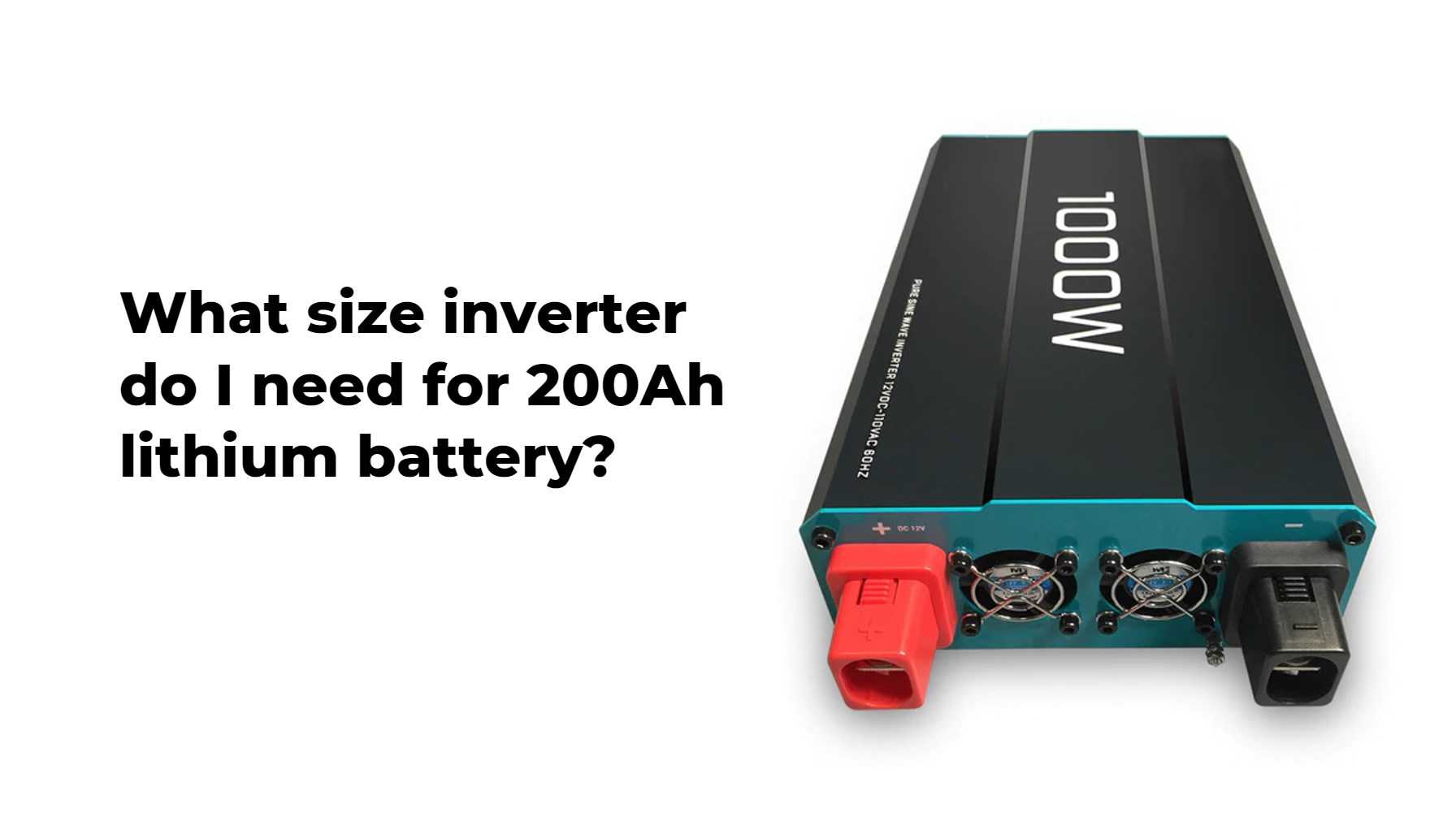When determining the appropriate inverter size for a 200Ah lithium battery, several key factors must be considered, including the battery’s voltage, the total load you plan to power, and the efficiency of the inverter. A well-chosen inverter not only maximizes performance but also extends the lifespan of both the battery and the inverter itself.
Calculating Power Output
A 200Ah lithium battery typically operates at a nominal voltage of 12 volts. This means it can theoretically deliver 200 amps for one hour, or any equivalent combination (e.g., 100 amps for two hours). The total energy capacity can be calculated using the formula:
For a 12V 200Ah battery:
Determining Inverter Size
Given this energy capacity, a 200Ah lithium battery can effectively support an inverter rated for approximately 1920 watts under optimal conditions. However, practical recommendations suggest:
- For continuous loads: A 1500W to 2000W inverter is suitable, providing some headroom for peak loads.
- For short bursts (like starting motors): An inverter rated higher than your continuous load may be necessary, such as a 3000W inverter.
Practical Recommendations
- Continuous Loads: If you plan to run devices that require constant power, such as lights or small appliances, a 1500W to 2000W inverter will suffice.
- Surge Loads: For devices with high startup currents (like refrigerators or power tools), consider an inverter rated at least 3000W to handle these surges without straining the battery.
Efficiency Considerations
The efficiency of the inverter also plays a crucial role in determining how much power you can draw from your battery. Most inverters operate at about 85-90% efficiency, meaning that if you have a 2000W inverter, you should expect to draw about 1800-1900W from your battery under ideal conditions.
Latest News
- Recent trends indicate that lithium-ion batteries are becoming increasingly popular for off-grid and backup power applications due to their efficiency and longevity.
- Advances in inverter technology are allowing for better compatibility with lithium batteries, improving overall system performance.
- Industry experts recommend matching inverter capacity closely with actual load requirements to optimize battery life and system reliability.
Redway Expert Comment
Selecting the right inverter size for your 200Ah lithium battery is essential for maximizing performance and longevity. At Redway Battery, we emphasize understanding your energy needs and choosing an inverter that aligns with those requirements. This approach not only enhances efficiency but also ensures that both your battery and inverter operate within their optimal limits.”




